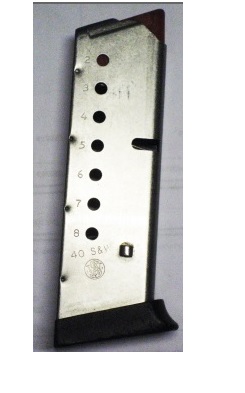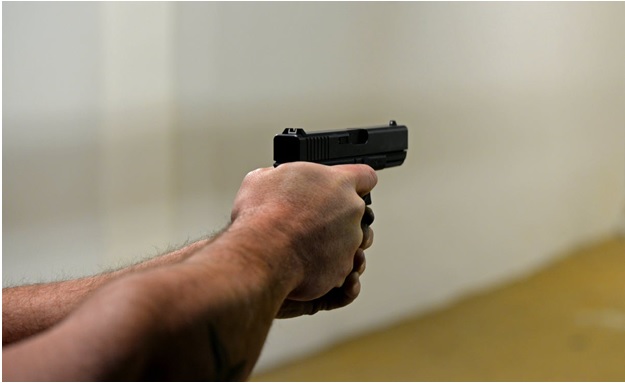Magazine Maintenance: The Prelude to a Google Search for “Pistol Magazines for Sale”
Aug 25th 2022
Conscientious gun owners clean their pistols after every trip to the range. That is one aspect of responsible gun ownership that’s pretty easy to encounter among reasonable shooting enthusiasts.
For some reason - which we cannot fathom - the same does not go for magazine maintenance. Whatever the reason, too many gun owners simply allow responsible magazine maintenance and cleaning to fall through the cracks.
You clean your pistol - why wouldn’t you clean the firearm’s magazine? Think about it for a second. It makes no sense.
Admittedly, pistol magazines might be relatively simplistic devices, but they still need to operate fluidly in order to allow the firearm to feed. Without them, repeaters and autoloaders are basically single-shot platforms.
So, if you’re thinking about looking for pistol magazines for sale, our first advice is to take a step back and clean the ones you have. You might be able to bring them back to life.
Disassembling Pistol Magazines Prior to Cleaning
First things first, never handle a firearm without clearing the gun’s magazine and chamber. Ensure that the firearm is unloaded, then remove the magazine.
There are two basic types of magazines. Those with removable base plates, and those without removable baseplates.
To maintain a pistol magazine with a removable base plate, remove the screw that secures it, slide the base plate off, and then remove the spring and follower through the open bottom of the mag.
Some pistol magazines have fixed base plates, although these are not so common. To disassemble these, press down on the follower, compressing the spring, then dip one end of the follower down. Changing the angle should allow you to slide the follower up, out the top of the magazine, followed by the spring.
Just be careful when disassembling pistol magazines, as the springs may want to jump out of them.
Once disassembled, prepare a clean mat or another cleaning surface, and arrange your follower, spring, base plate, mag box body, and accessories for cleaning.
Pointers for Cleaning Pistol Magazines
Once you have your magazine disassembled and prepared, follow these tips for success which will help prevent incidental damage to the magazine or its internals.
- Use only appropriate gun cleaning agents.
Don’t assume that a solvent, lubricant, or cleaning agent is safe with a magazine. However, most gun cleaners are suitable.
- Wipe the outside of the magazine’s box off.

The first step in cleaning a pistol magazine is to clean off the outside of the box. For this, you’ll probably only need warm water and a rag. Use a nylon or a brass brush to remove any stubborn deposits of fouling or grease.
- Clean fouling out from the inside of the magazine.
Next, it’s time to clean out the inside of the magazine, where fouling and carbon residue are likely to accumulate. Use a rag, or again, a nylon or brass brush for aggressive removal. Then wide down the inside of the mag and allow it to dry.
- Remove fouling from the internal spring.
Your mag’s internal spring is a magnet for fouling, dust, dirt, and other grime, and if it gets really bad, the spring could rust right through. If that happens, your mag will fail entirely.
Use an appropriate solvent to remove fouling from the spring, then wipe it clean.
- Apply a light coat of oil to the magazine spring.
Once your mag spring is shiny and clean (using a figure of speech here) apply a light coat of oil to the spring.
This is not to lubricate the spring itself, but to protect it against oxidation. Rust can destroy your spring in no time flat.
However, the keyword here is light. Use as little oil as possible. Like, put a drop on a rag and use that to wipe the spring. Oil is sticky, and the more oil you use, the more your spring will attract the dirt and fouling that will cause these issues in the first place
- Do not lube polymer magazine components.
If your magazine has a polymer follower, base plate, or other internal components, don’t lubricate these. Some polymers dissolve in oils, and most lubricants are oil-based. Besides, polymers are corrosion-proof and don’t need to be lubed anyway.
- Clean fouling off of the follower.
With the spring clean, move on to the follower. If it’s polymer, wipe it clean and you’re good to go.
If it’s steel or made of some other metal alloy, wipe it clean (again, using a brush to dislodge any grease or fouling) and once more apply a light - light! - coat of oil to protect against corrosion.
- Inspect the follower for deformation or damage.
Now is also a good time to make sure that the follower is in good shape. If it’s cracked or bent, that could be a reason you’re having trouble with feeding. Ammunition has to lay perfectly along the follower in order for the mag to feed. If the follower is damaged, replace it.
- Remove and replace any worn components (replacing a spring can bring a magazine back to life).
Now is also the time to inspect all of the magazines components for signs of wear (not just the follower). If your magazine body is dented or corroded, it may hinder feeding and should be adjusted. Some cosmetic damage can easily be fixed, but if the body is too far gone, find a new compatible pistol magazine for sale and keep your old spring and followers as spares.
Also, fatigued or corroded springs should be replaced right away because you’ll just be making more work for yourself later if you reassemble the magazine and it won’t feed.
- Reassemble magazine, then check operability and feeding with snap caps or dummy rounds.
Once you’ve finished cleaning and lubricating your magazine and its internal components, it’s time to reassemble the magazine in the reverse order from which you disassembled it.
For models with removable floorplates, this means inserting and seating the follower through the bottom, then inserting the spring before sliding the base plate back on and securing it.
For models without removable baseplates, this means compressing and inserting the mag spring before sliding the follower in on top of it and seating it under the mag’s feed lips so it won’t pop out. Take care when doing this as the mag follower and spring will want to shoot out the top of the mag unless the follower is properly seated inside.
Once the magazine is reassembled, load it with dummy rounds or snap caps to ensure the mag will hold them and stack them properly, then attempt to feed them. If the mag feeds them smoothly, you’re back in business.

Cut Your Losses: We Have Pistol Magazines for Sale
Sometimes, damage to a magazine - either internal or external - is impractical to fix with routine maintenance. Also damage to the mag body which can’t be fixed warrants getting a new mag. Sometimes, worn springs and followers are simply not cost-effective to replace.
In these instances, look through our collection of pistol magazines for sale and get a model that’s compatible with your 1911, Glock, Sig Sauer, S&W, or whatever you carry. If you have questions about feeding, maintenance, of firearm compatibility, get in touch with us at 610-250-3960 and we’ll help you out.

